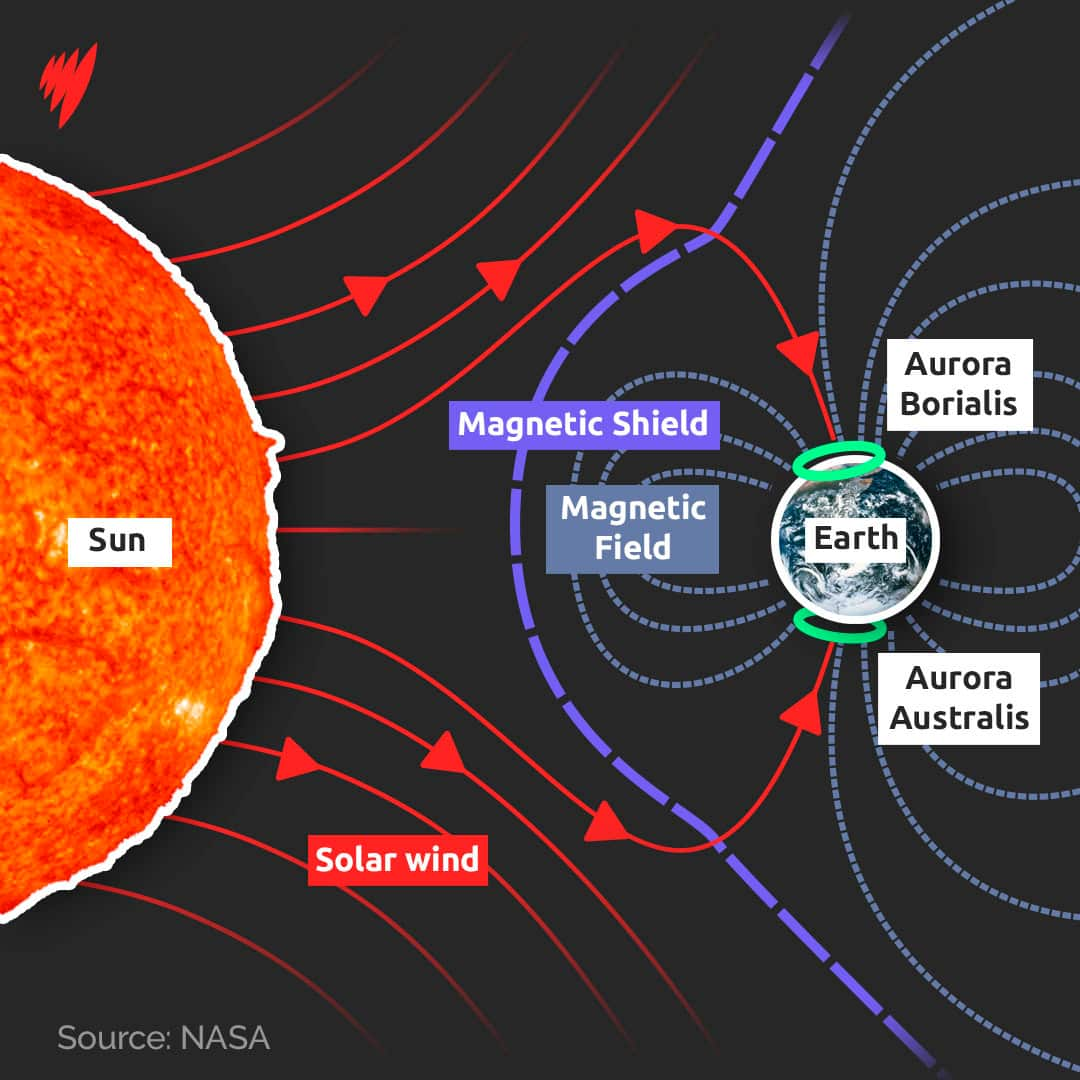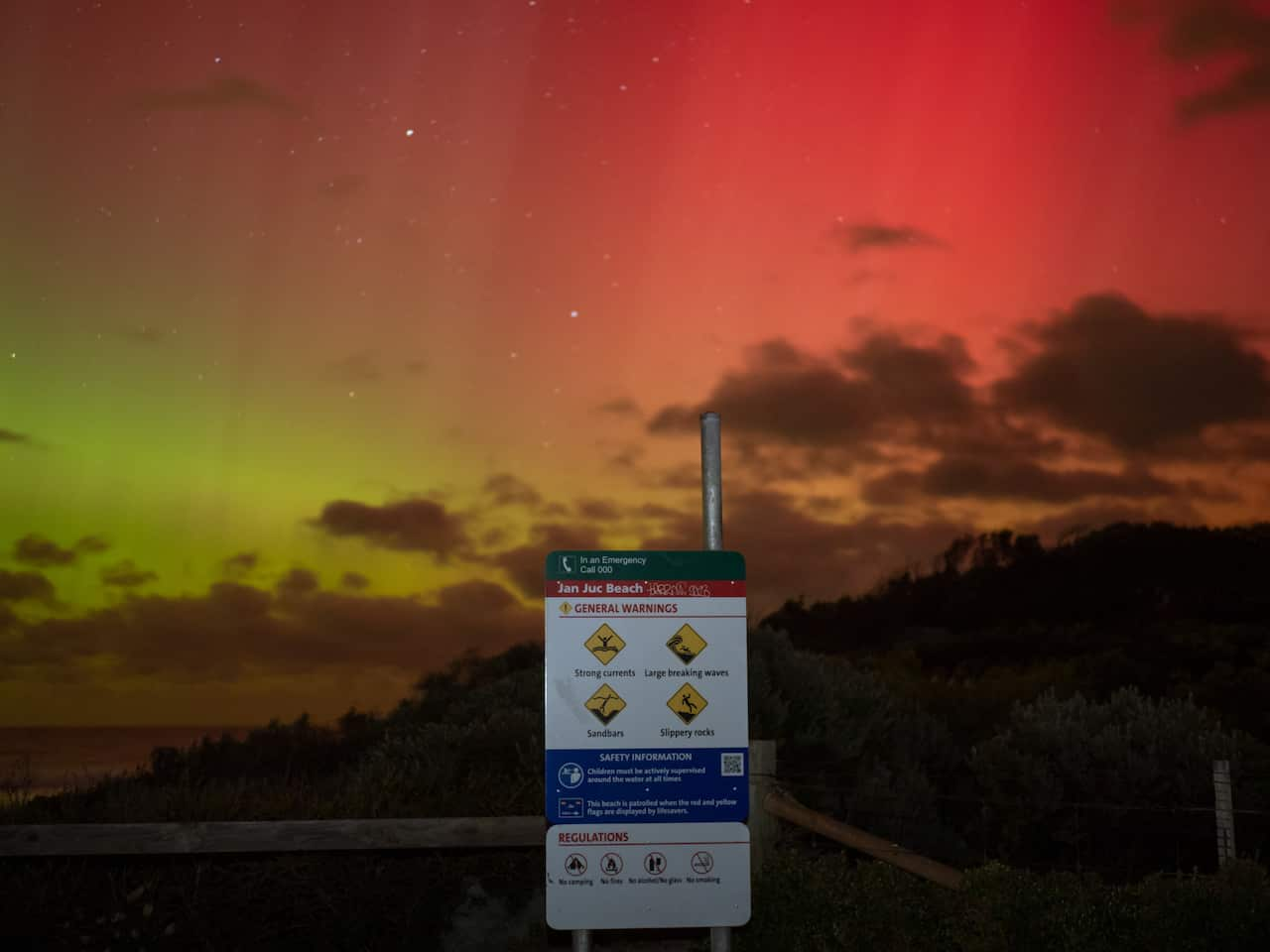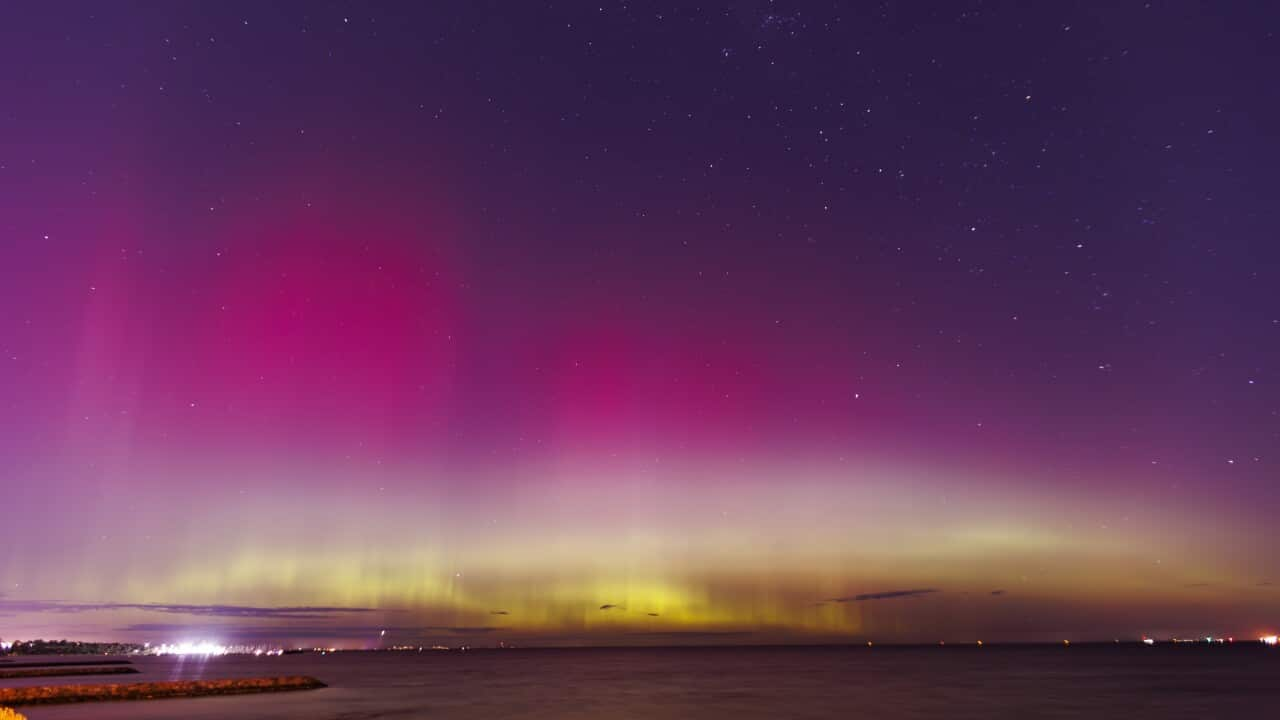Australians hoping for an aurora encore can be assured there will be several viewing opportunities during 2024.
Last month, millions worldwide witnessed the most powerful geomagnetic storm in two decades, bringing striking hues of green, red, purple, pink and yellow to the skies.
Aside from the dazzling display, the extreme storm raised fears of potential blackouts or damage to power infrastructure caused by changes to the Earth’s magnetic field.
While there were no reports of damage, social media was flooded with aurora photographs taken by people from South Australia to Queensland.
So when are we likely to see the next nocturnal light show, and what causes the night sky to change so dramatically?
What is an aurora?
Auroras are caused by ‘solar wind’, a stream of electrically charged particles the sun blows towards the earth at about over 1.6 million km per hour, according to NASA.
Most of these particles are intercepted by the Earth’s protective magnetic field, but some travel down the magnetic field lines at the north and south poles.
When these particles interact with gases in our atmosphere, we see the beautiful display of lights in the night sky called aurora australis in the south and aurora borealis in the north.
Associate Professor Michael Brown, with the School of Physics and Astronomy at Monash University, explained that a potent group of sunspots was behind last month’s stunning display.
“The trigger for May’s spectacular event was this group of sunspots that were particularly active producing a lot of very bright, extremely bright solar flares and coronal mass ejections,” he told SBS News.
“Typically you get a big coronal mass ejection every once in a while. And basically, this group of sunspots just fired off a whole bunch in a row.”
He said this group is still “active and it’s still producing flares and coronal mass ejections”.
Brown noted that the auroras are usually restricted to areas close to or in the polar regions, so the May sightings of the atmospheric phenomenon in Queensland’s northern city of Mackay were particularly unusual.
When will we see the next aurora australis?
Brown explained the sun has a natural cycle of activity that runs roughly 11 years.
“We’re at the maximum of that activity, the solar maximum, so auroras are getting seen from Southern Australia quite often,” he said.
He said an aurora is visible every few weeks — with the sun rotating roughly every four weeks.
The southern lights were visible in Melbourne and across South Australia last month. Source: SIPA USA / Alex Zucco
They are being spotted from Western Australia, South Australia, Tasmania, and in some instances, NSW and Victoria too.
While he said auroras can be fickle and predictions not always precise, the Bureau of Meteorology tracks weather conditions conducive to an aurora event.
When such conditions are in progress, the .
Brown also advised joining dedicated Facebook groups, which regularly post updates from avid skygazers.
“So, if it’s faint and low on the horizon and very difficult to see, maybe it’s not worth having a look,” Brown said.
“But if people are posting photos of a nice bright display, then it might be worth getting away from the bright city lights.
“Go somewhere dark that has a clear view to the south and hopefully see some spectacular aurora.”


